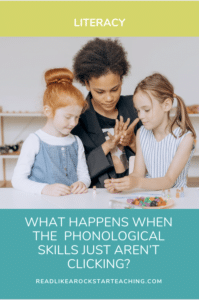
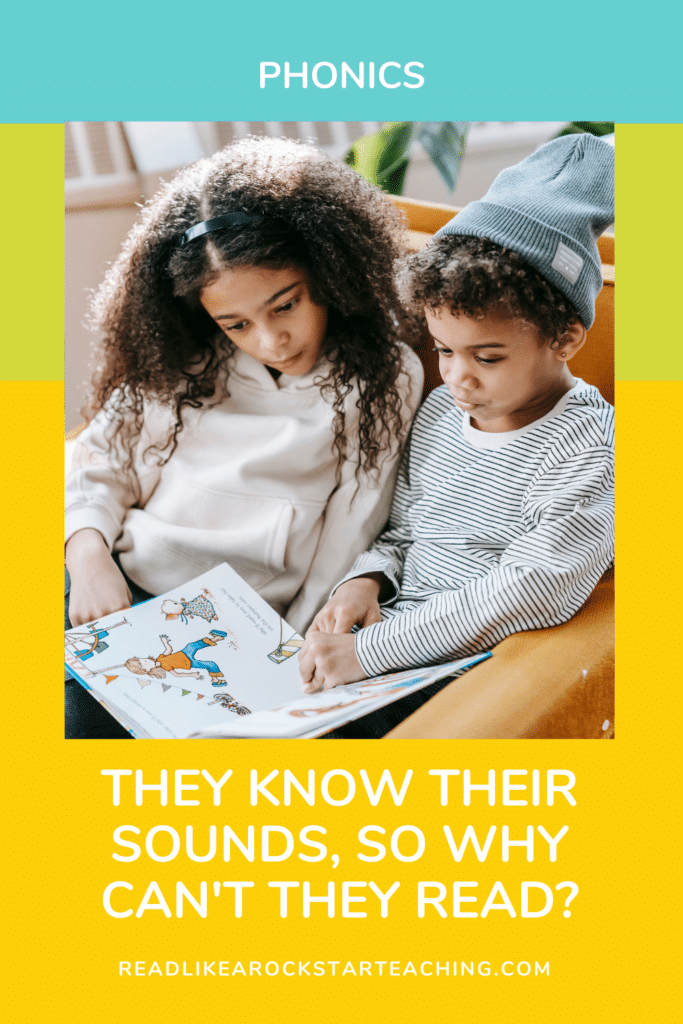
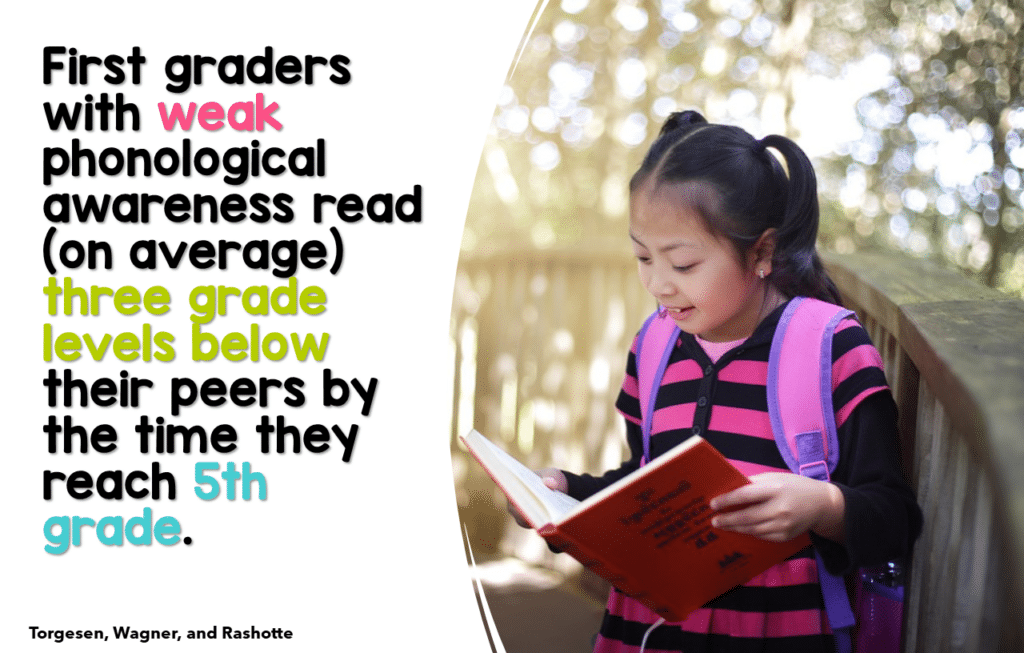
Do you ever get those students (or maybe it’s your own children) that know their letters and sounds, but they just can’t seem to put simple words together to read?
You hear them sound out /c/ /a/ /t/, but then they:
1. Begin guessing random items they saw in the picture.
2. Start using the last sound they said. “Tap? Tac? Tic? Tree?”
3. Stare at you blankly.
The good news is that you are not alone and that this temporary reading roadblock is fixable!
This may be an indicator that they haven’t been practicing phonological awareness simultaneously.
Many people make the mistake of teaching letter sounds and then putting a book in front of a child expecting them to magically read.
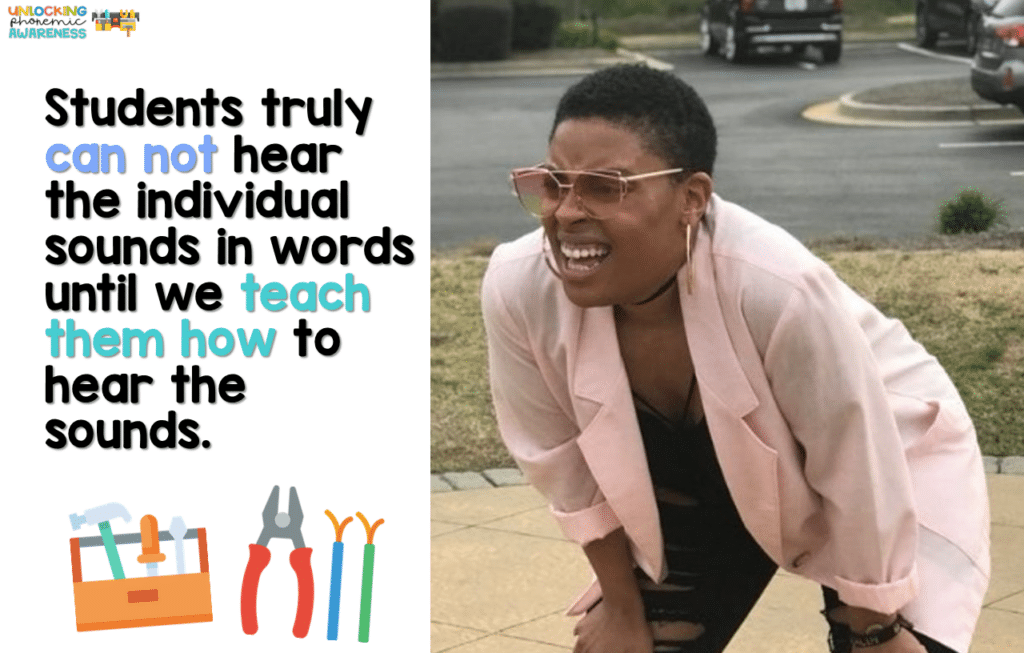
Spoken language is seamless. We have to teach our readers to “see” the seams, undo them, and attach them the letters. That’s a lot of work for a young mind.
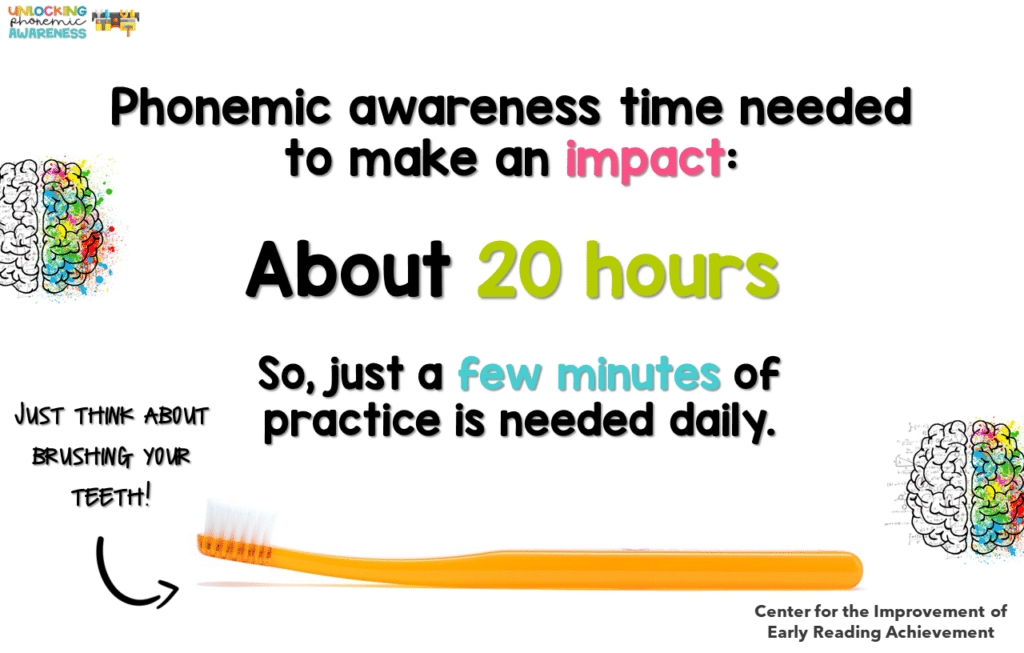
There are levels to becoming phonologically aware. It isn’t going to happen over night. It takes a little bit of practice daily to make a huge impact and change in the brain over time.

VERY simply put: there’s a part of our brains that doesn’t really exist in the way it needs to UNTIL we work on phonological awareness activities.
If you’ve got 30 minutes to spare and LOVE research, click on the image below watch a mind-blowing video about how the brain learns to read.

Phonemic awareness is under the umbrella of phonological awareness.
It is an absolute necessity that students have these skills if they are to become successful readers. Otherwise, many are doomed to guessing, feeling frustrated, and being labeled a struggling reader.
What look like a strong reader in K-2 can quickly change in 3-5 when words become more complex and picture support is minimal.
Students should work on phonological awareness with the goal of becoming better at phonemic awareness. Students need phonemic awareness to become strong word decoders.
When my students can segment, blend, and change the sounds in words (coupled with systematic phonics) I know I have a reader on my hands! This has happened with some of my kindergarten students as early as November, when I start phonics and PA instruction from Day 1 of school.
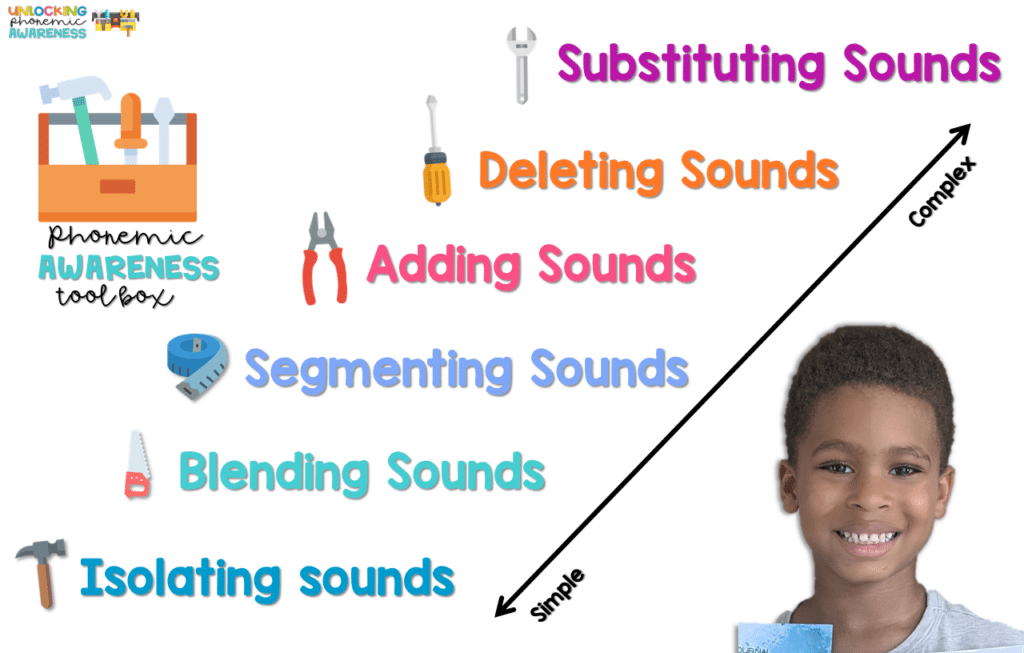
Phonemic awareness is under the umbrella of phonological awareness. Find PA resources here.
It is an absolute necessity that students have these skills if they are to become successful readers. Otherwise, many are doomed to guessing, feeling frustrated, and being labeled a struggling reader.
Almost everyone! When we use methods that help around 95% of readers learn how to read (yes, including students with some learning disabilities), we maximize the learning opportunities in our classroom and we set our students up for success.
This is the beauty of science of reading. It’s the most effective way to teach reading according to neuroscience. This information has been around for decades. It’s important for all teachers and schools to adopt this way of teaching reading. There shouldn’t be any “reading wars”. There’s a right way and a wrong way to teach kids how to read.
Note: The science of reading isn’t just Phonics and PA! Vocabulary, Fluency, and Comprehension are important too!
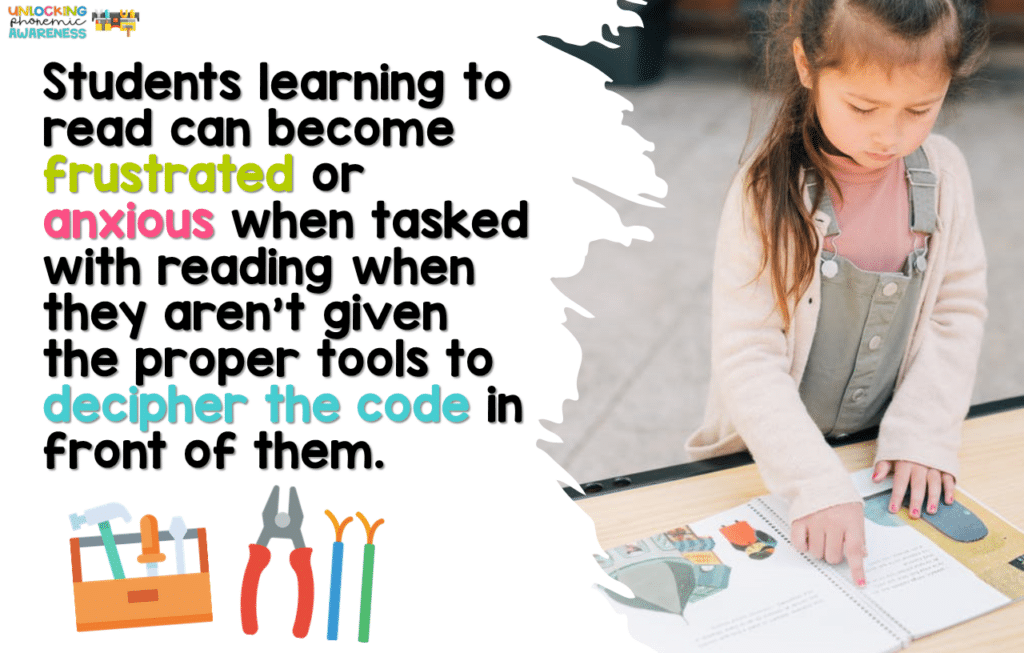
Only teaching students phonics is like giving them the map, without the map key to make sense of it, and then wondering why the kids are so lost.
If you haven’t been teaching PA, start now. If you haven’t been teaching complex phonics elements appropriate for K-2, start now. Your students deserve it!
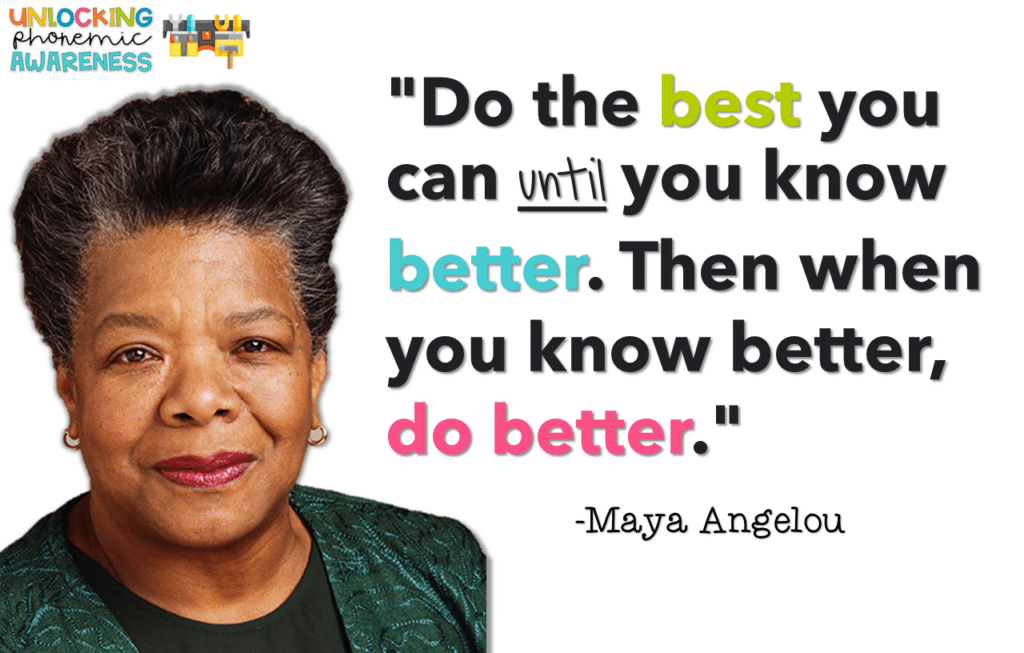
Check out this freebie if you aren’t sure where to start, but want to get started! Click here or the image below.
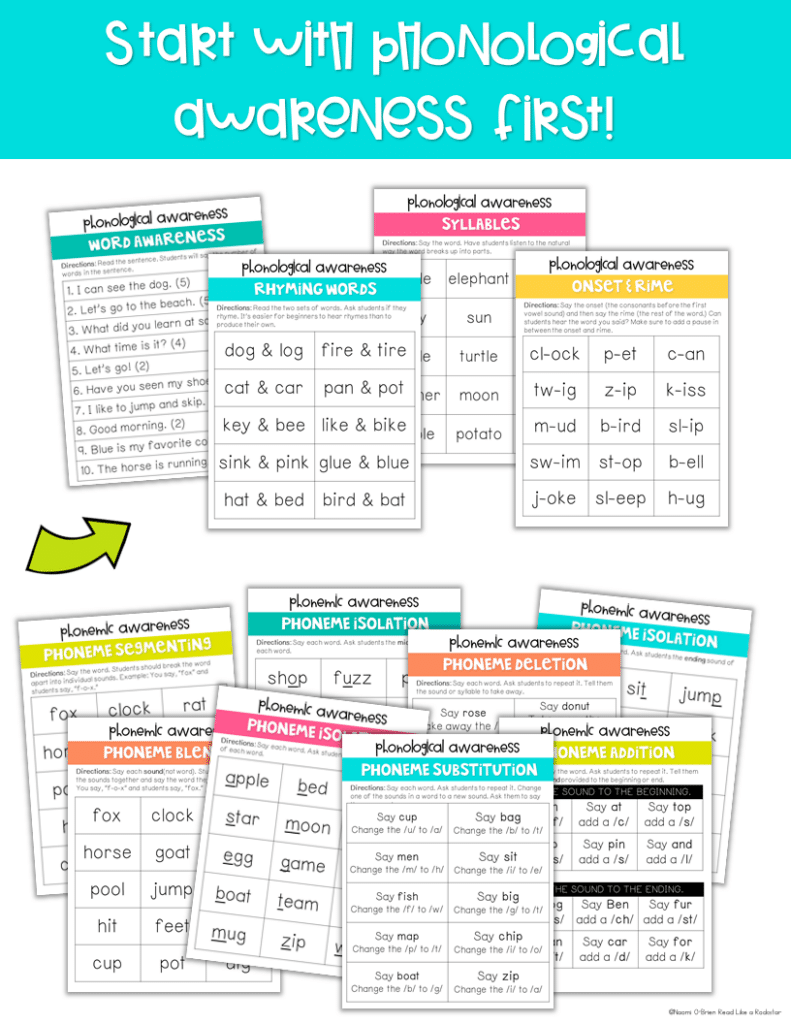
There is no agreed upon phonics scope and sequence, but you do need a scope and sequence that is being explicitly taught. This means you’re teaching letters and sounds in an order and directly teaching students letters and their sound-spelling correspondences.
Make sure to go beyond basics. Kindergarten educators should not limit their students to A-Z only.
Consider using a sound wall in order to introduce sounds in a fun way that serves as a visual model for students. I included locks with a sound wall I created. I also included the scope and sequence I like to follow.
When the year starts, the sounds are locked, and we “unlock” a new sound or two each week. The students are always excited each week to see which sound was the new one to focus on!
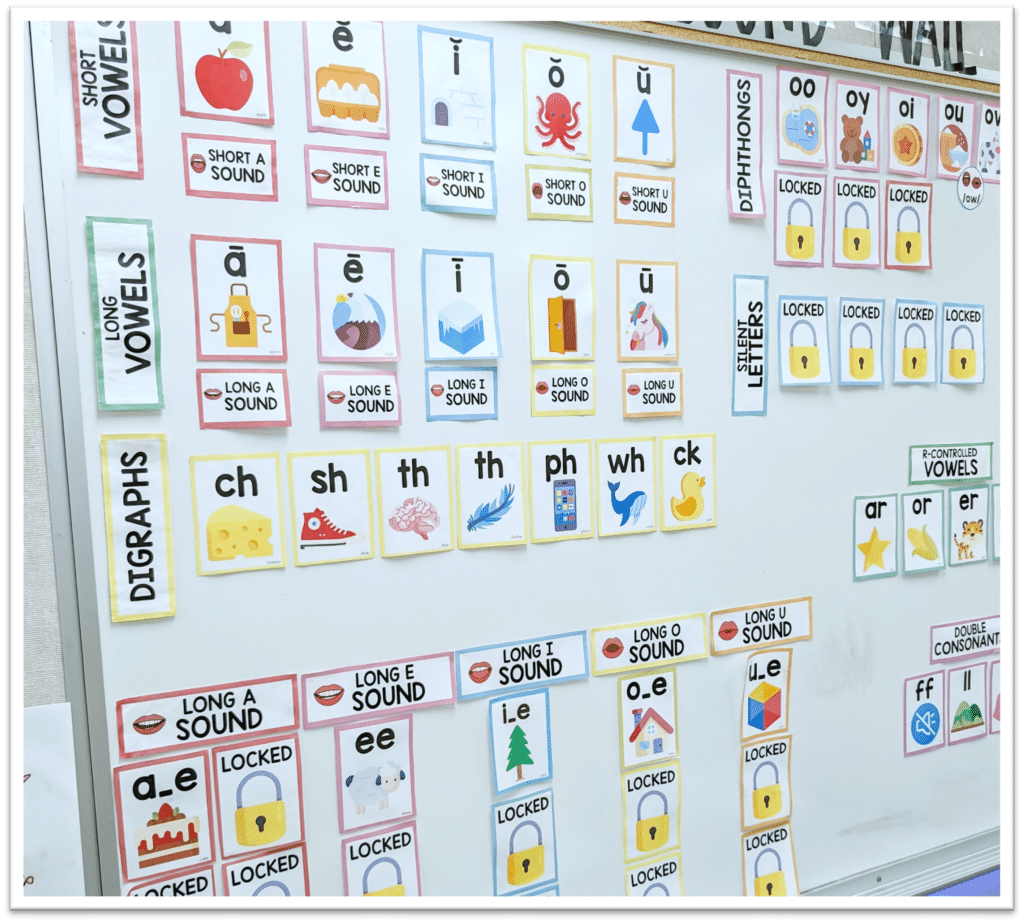
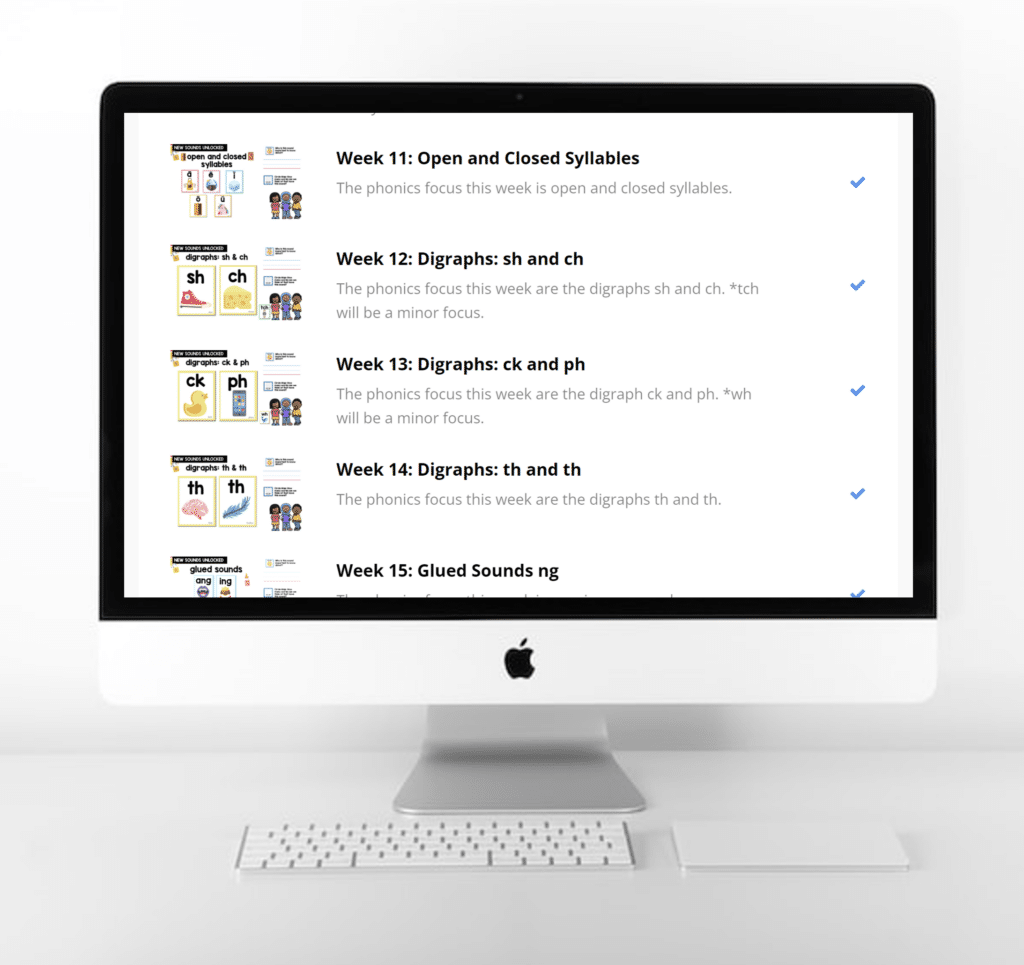
Let me be your science of reading coach! I have created a Systematic Phonics and Phonological Awareness membership and reading program that has everything you need to teach your students daily. Use the code: PAHALFOFF to get the first 2 months you try out for 50% off! That’s 8 weeks of research-based lessons!
It Includes:
Engaging digital slides
Printables
Science of Reading Resources
Decodable Readers
Asssements
Instructional Videos
Trainings
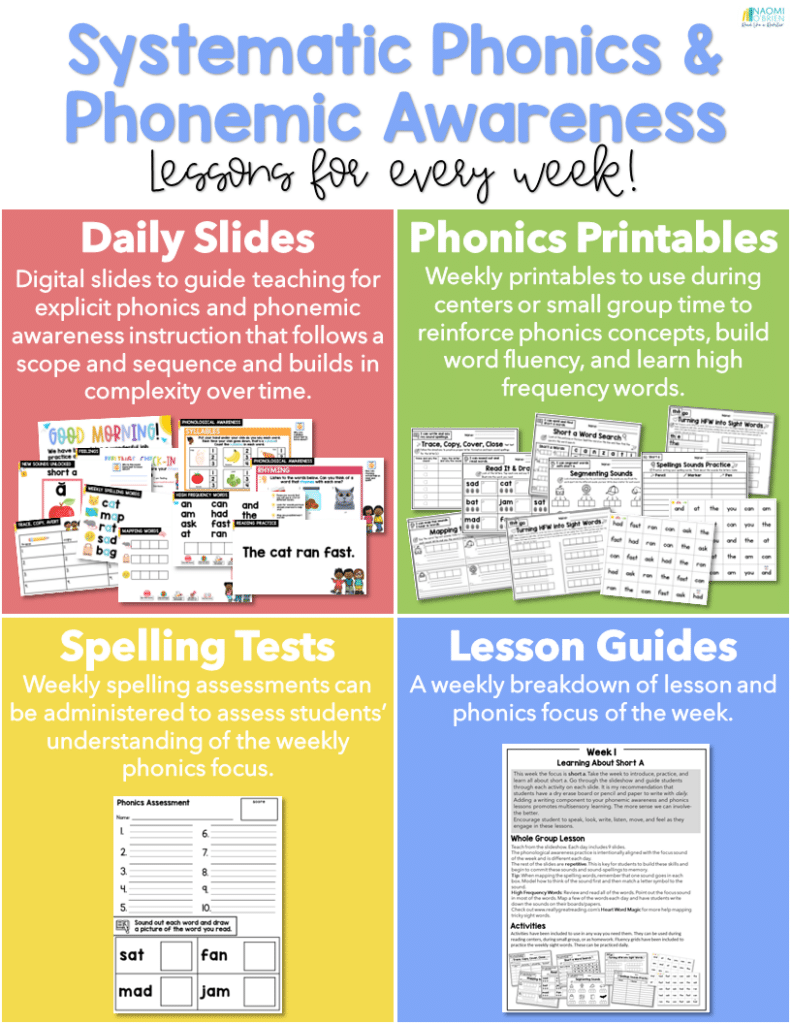
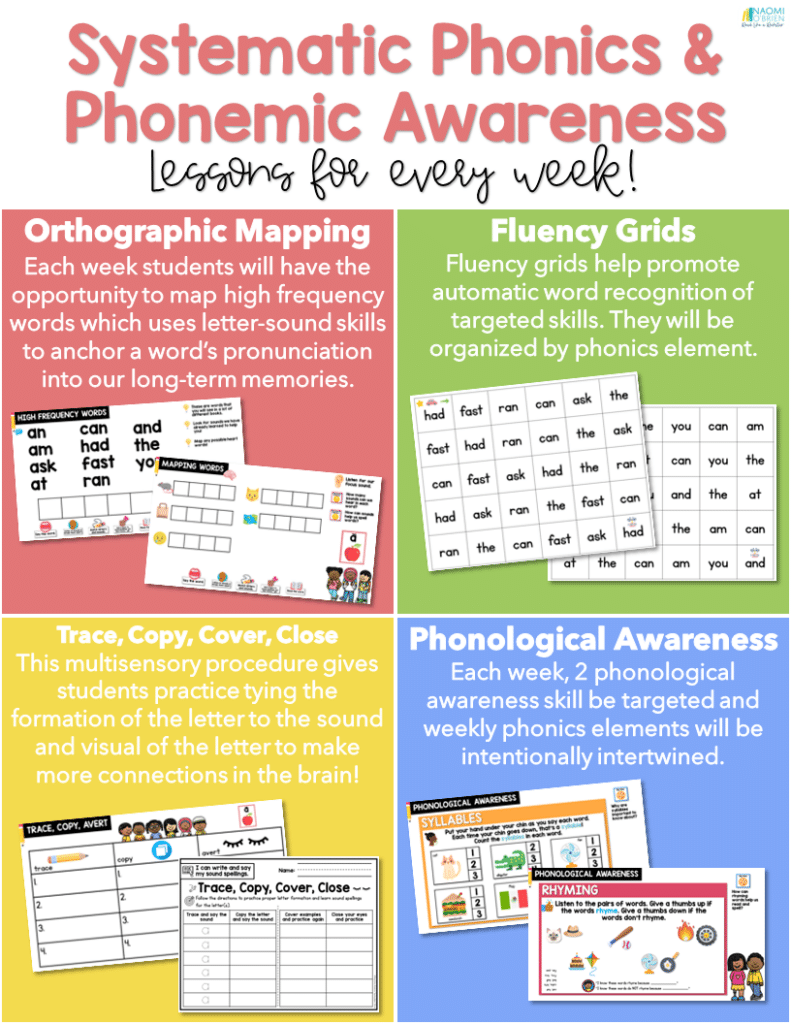
Use the code: PAHALFOFF
Click below or on any of the images to learn more!


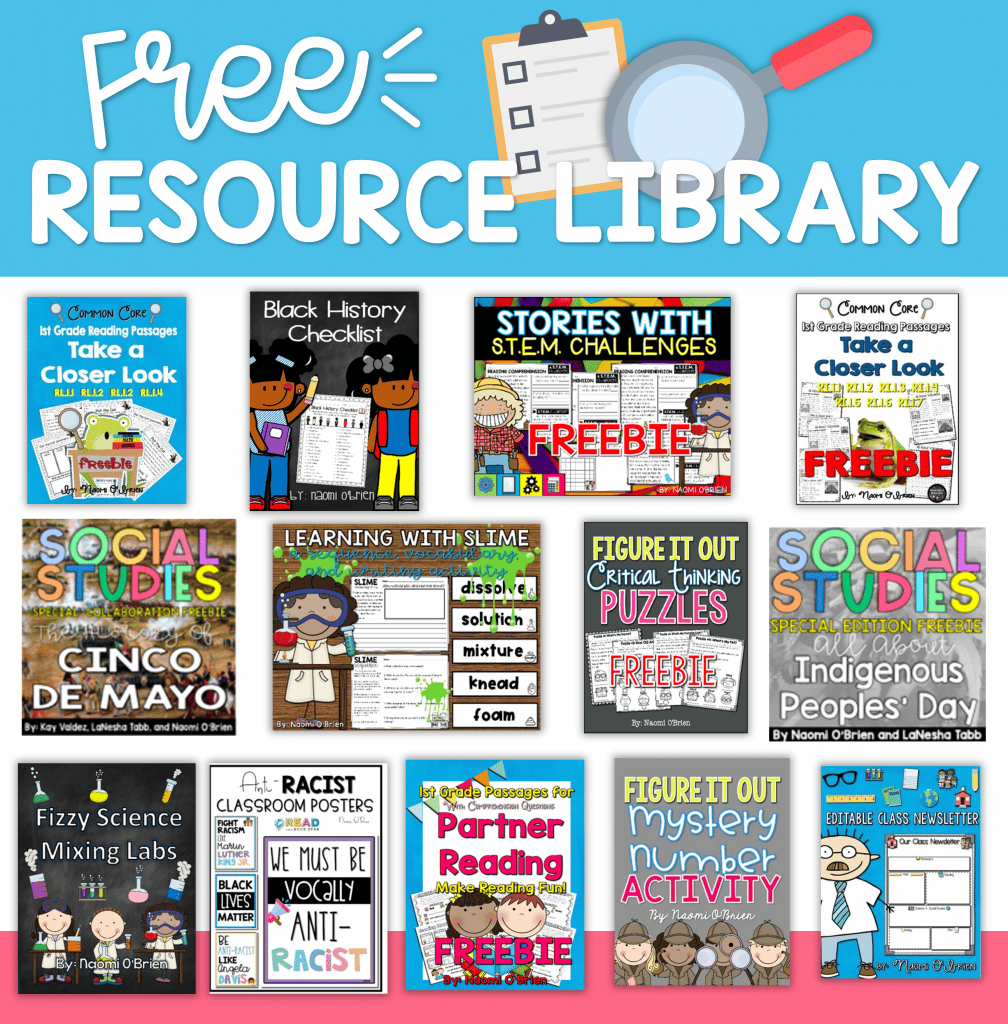
| Cookie | Duration | Description |
|---|---|---|
| cookielawinfo-checkbox-analytics | 11 months | This cookie is set by GDPR Cookie Consent plugin. The cookie is used to store the user consent for the cookies in the category "Analytics". |
| cookielawinfo-checkbox-functional | 11 months | The cookie is set by GDPR cookie consent to record the user consent for the cookies in the category "Functional". |
| cookielawinfo-checkbox-necessary | 11 months | This cookie is set by GDPR Cookie Consent plugin. The cookies is used to store the user consent for the cookies in the category "Necessary". |
| cookielawinfo-checkbox-others | 11 months | This cookie is set by GDPR Cookie Consent plugin. The cookie is used to store the user consent for the cookies in the category "Other. |
| cookielawinfo-checkbox-performance | 11 months | This cookie is set by GDPR Cookie Consent plugin. The cookie is used to store the user consent for the cookies in the category "Performance". |
| viewed_cookie_policy | 11 months | The cookie is set by the GDPR Cookie Consent plugin and is used to store whether or not user has consented to the use of cookies. It does not store any personal data. |
Thank you for your interest in booking a private professional development experience! Please fill out our Booking Inquiry form and a member of our team will contact you soon.